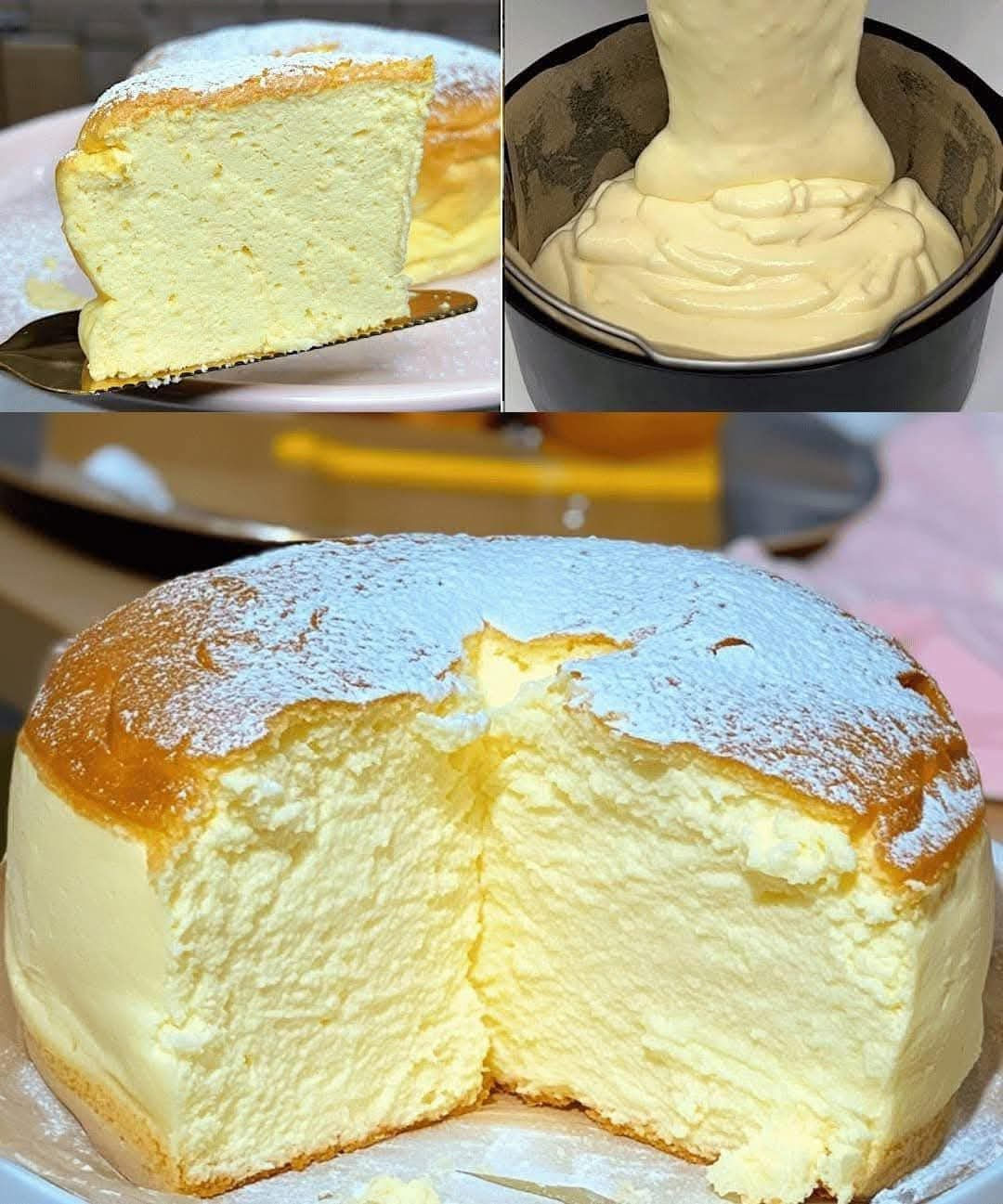Japanese Cheesecake: A Light and Fluffy Delight
Introduction
Japanese cheesecake, also known as soufflé cheesecake or cotton cheesecake, is a delightful fusion of traditional cheesecake and airy sponge cake. Unlike the dense and rich New York-style cheesecake, Japanese cheesecake is famous for its soft, fluffy texture and delicate sweetness. This dessert has gained worldwide popularity due to its melt-in-your-mouth quality and lightness, making it a favorite among dessert lovers of all ages.
History of Japanese Cheesecake
Japanese cheesecake traces its origins back to the 1960s when Japanese pastry chef Tomotaro Kuzuno was inspired by German-style käsekuchen (cheesecake). He modified the recipe by incorporating meringue into the batter, giving it a soufflé-like texture. Over time, it became a staple in Japanese bakeries and has since gained international recognition.
Benefits of Japanese Cheesecake
- Lighter Texture: Compared to traditional cheesecakes, this version is lower in fat and calories due to its airy composition.
- Less Sweet: Japanese cheesecakes have a mild sweetness, making them a great option for those who prefer less sugary desserts.
- Easy to Digest: The light and fluffy texture makes it easier on the stomach compared to heavier desserts.
- High in Protein: Eggs and cream cheese provide a good source of protein.
Ingredients
- 8 ounces (225g) cream cheese, softened
- 4 tablespoons unsalted butter
- 6 large egg yolks
- 1/3 cup (65g) granulated sugar
- 1/2 cup (60g) all-purpose flour
- 1 1/2 tablespoons cornstarch
- 1/4 cup (60ml) heavy cream
- 1 tablespoon lemon zest
- 6 large egg whites
- 1/3 cup (65g) granulated sugar (for meringue)
- 1 teaspoon vanilla extract
- 1/2 teaspoon cream of tartar
- Powdered sugar for dusting (optional)
Instructions
Step 1: Prepare the Ingredients
- Preheat the oven to 320°F (160°C). Line the bottom of an 8-inch round cake pan with parchment paper and wrap the outside with aluminum foil to prevent water from seeping in during the baking process.
- In a heatproof bowl, melt cream cheese, butter, and heavy cream over a double boiler, stirring until smooth. Remove from heat and let cool slightly.
Step 2: Make the Batter
- In a separate bowl, whisk egg yolks and granulated sugar until pale and creamy.
- Gradually add the cream cheese mixture, whisking continuously.
- Sift in the flour and cornstarch, folding gently until fully incorporated.
- Stir in the lemon zest and vanilla extract.
Step 3: Prepare the Meringue
- In a clean, dry bowl, beat the egg whites and cream of tartar using an electric mixer until foamy.
- Gradually add granulated sugar while continuing to beat until stiff peaks form.
Step 4: Combine and Bake
- Gently fold one-third of the meringue into the batter to lighten it. Then, fold in the remaining meringue in two batches, being careful not to deflate the mixture.
- Pour the batter into the prepared cake pan and smooth the top.
- Place the cake pan into a larger baking dish and pour hot water into the larger dish until it reaches halfway up the sides of the cake pan.
- Bake for 60–70 minutes, or until the top is golden brown and a toothpick inserted into the center comes out clean.
- Turn off the oven and let the cake cool inside with the door slightly open for 15 minutes to prevent sudden deflation.
- Remove from the oven, let cool completely, then transfer to a plate.
Serving and Presentation
- Dust with powdered sugar for an elegant finish.
- Serve with fresh berries, whipped cream, or a drizzle of honey.
- Enjoy with a cup of tea or coffee.
Nutritional Information (Per Slice, Approximate)
- Calories: 180 kcal
- Protein: 5g
- Carbohydrates: 18g
- Fat: 10g
- Sugar: 12g
- Cholesterol: 85mg
- Fiber: 0.5g
Who Loves Japanese Cheesecake?
- Dessert Enthusiasts: Those who enjoy delicate, less sugary desserts find Japanese cheesecake a delightful treat.
- Health-Conscious Individuals: Since it’s lighter than traditional cheesecakes, it appeals to those who want to indulge without guilt.
- Home Bakers: Many enjoy making Japanese cheesecake at home due to its rewarding process and impressive results.
- Asian Cuisine Lovers: Fans of Japanese and Asian-inspired desserts often appreciate the unique texture and flavor of this cake.
Conclusion
Japanese cheesecake is a wonderful dessert that blends the richness of cheesecake with the lightness of sponge cake. Its smooth, airy texture and subtle sweetness make it a favorite among dessert lovers worldwide. Whether enjoyed plain, with fruit, or with a dusting of powdered sugar, this cheesecake is sure to impress. Try baking it at home and experience the magic of this Japanese delight!
Here’s a detailed recipe and background on Japanese Cheesecake. Let me know if you want any modifications or additional details!
